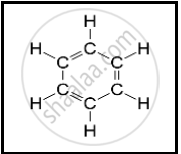Advertisements
Advertisements
प्रश्न
उत्तर
The necessary conditions for the formation of covalent molecule are:
Number of valence electrons: Both the participating atoms should have four or more valence electrons in their valence shell.
Equal electro negativities: The combining atoms should have equal electro negativities so that no transfer of electrons takes place.
Equal electron affinities: The combining atoms should also have equal electron affinities i.e. equal attraction for electrons.
Ionization energy: It should be high for both the atoms so that there is no chance of removal of electrons.
High nuclear charge and small inter nuclear distance: Both these conditions favor the formation of covalent bond because during the formation of a covalent bond the electron density gets concentrated between the nuclei of the combining atoms and this electronic charge is responsible for holding the two nuclei together.
The properties of covalent compounds are:
Nature: They are generally volatile liquids or gases. Some may be gases like urea, sugar etc.
Low melting and boiling points: Since the intermolecular forces of attraction are weak, very small amount of heat energy is required to overcome these forces hence their melting and boiling points are low.
Electrical conductivity: Since covalent compounds are made up of molecules and not ions, so they do not conduct electricity.
Solubility: These are insoluble in water but soluble in organic solvents.
Ionization in solution: These do not ionize when dissolved in water except some polar covalent compounds like HCl.
Molecular reactions: These participate in reactions as a molecule so the reactions are called molecular reactions. These are slow reactions.
APPEARS IN
संबंधित प्रश्न
Name the type of bonds formed in ionic compounds and in the compounds formed by carbon.
Fill in the blank in the following sentence:
In forming N2 molecule, .............. electrons are shared by each atom of nitrogen.
Explain why, diamond has a high melting point.
Draw an electron dot structure of the following molecule. (Without showing the circle) :
Ethene
Explain the following term with example.
Hetero atom in a carbon compound
The following structural formula belongs to which carbon compound?

Potassium (Atomic No. 19) and chlorine (Atomic No. 17) react to form a compound. On the basis of electronic concept, explain
(i) oxidation
(ii) reduction
(iii)oxidising agent
(iv)reducing agent
Name two carbon compounds used in day-to-day life.
The I.U.P.A.C name of CH3CH2CH = CH2 is?
Oils on treating with hydrogen in the presence of palladium or nickel catalyst form fats. This is an example of
